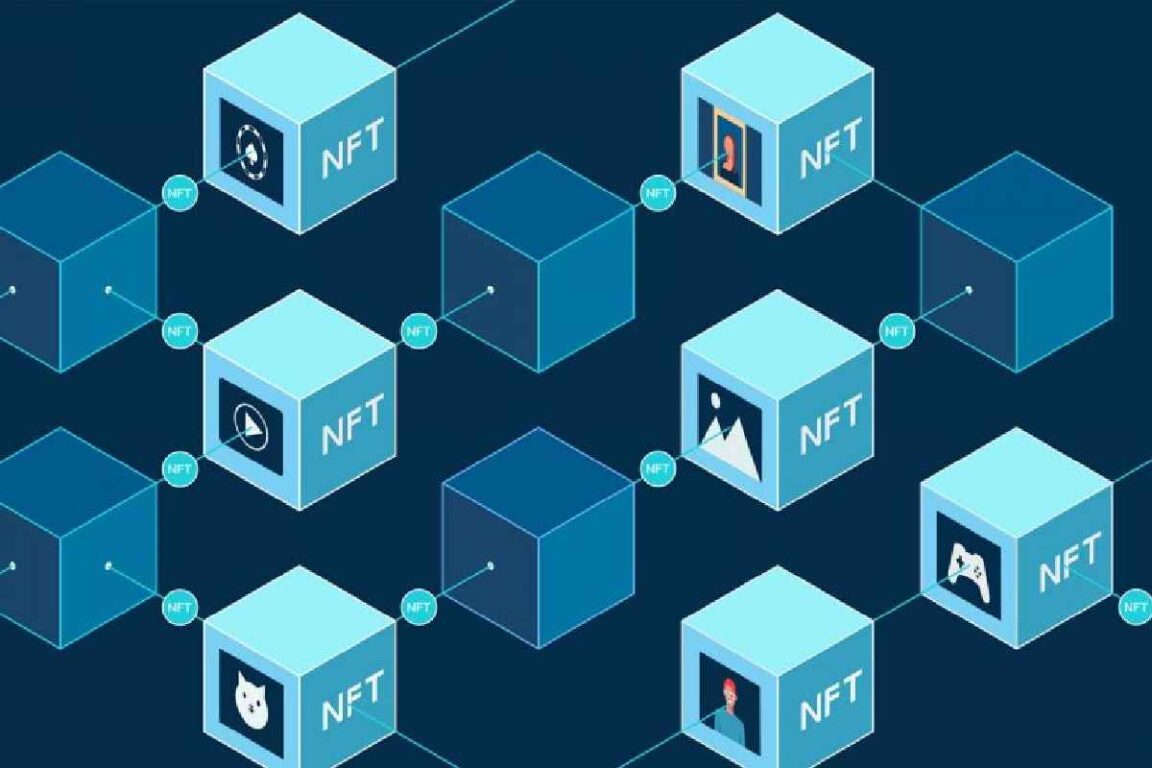A blockchain is a dispersed database or ledger shared among a computer network’s nodes. They are best known for their vital role in cryptocurrency systems for upholding a secure and distributed record of transactions, but they are not limited to cryptocurrency uses. Blockchains can be use to make data in any industry immutable—the term used to describe the inability to be altered.
Because there is no way to change a block, the only trust needed is at the point where a user or program enters data. This aspect reduces the need for trusted third parties, which are usually auditors or other humans that add costs and make mistakes.
KEY FEATURES
- Blockchain is a type of shared database that diverges from a typical database in the way it rations information; blockchains store data in blocks linked together via cryptography.
- Different sorts of information can be store on a blockchain, but the most common use for transactions has been as a ledger.
- In Bitcoin’s case, blockchain is decentralized so that no single person or group has control—instead, all users collectively recollect control.
- Decentralized blockchains are unassailable, which means that the data entered is irreversible. For Bitcoin, transactions are permanently recorded and viewable to anyone.
Blockchain security
Blockchain is frequently claim to be an “unhackable” technology. But 51% of attacks allow threat actors to gain control over more than half of a blockchain’s calculated power and corrupt the integrity of the shared ledger. While this particular attack is expensive and problematic, the fact that it was effective means that security specialists should treat blockchain as a useful technology—not a magical answer to all problems.”
The 51% attack takes advantage of what is known as the 51% problem: “If a single party possesses 51% of a mining pool, it is possible to fabricate an entry into the blockchain, allowing for double expenses, and even to fork a new chain to the benefit of the mining pool.”
The 2 main types of blockchain, public and private, offer dissimilar levels of security. Public blockchains use computers associated with the public internet to authenticate transactions and bundle them into blocks to add to the ledger. Private blockchains, on the other hand, stereotypically only permit known organizations to join.” Because any organization can join public blockchains. They might not be suitable for enterprises concerned about the confidentiality of the information moving through the network.
Why Is Blockchain Important?
Blockchain is an incredibly talented and revolutionary technology because it helps to reduce security risks, stamp out scams and bring transparency in a scalable way.
Popularized by its connotation with cryptocurrency and NFTs, blockchain technology has since progressed to become a management solution for all types of worldwide industries. Today, you can find blockchain technology providing transparency for the nutrition supply chain. Securing healthcare data, innovating gaming, and overall changing how we handle data and ownership on a large scale.
What Is a Miner in Blockchain?
Miners generate new blocks on the chain through a procedure called mining. In a blockchain, every block has its unique personal time being and hash, but it also references the hash of the earlier block in the chain, so mining a block isn’t relax, especially on large chains.
Miners use unusual software to solve the unbelievably complex math problem of discovering a nonce that generates an accept hash. Because of the nonce is only 32 bits, and the mess is 256. There are coarsely four billion possible nonce and hash combinations that must be mine before the correct one is found. When that happens, miners are said to have originate the golden nonce, and their block is add to the chain.
Making a change to any block previously in the chain requires remining not just the block with the change but all of the blocks that come afterward. This is why it is extremely difficult to manipulate blockchain technology. The reason for it as security in math since finding golden nonces necessitates an enormous amount of time and computing power. When a block is fruitfully mined. The change is accept by all of the nodes on the network, and the miner is salaried financially.
Blockchain vs. Cryptocurrency
Blockchain’s most well-known use in cryptocurrencies. Cryptocurrencies are digital currencies like Bitcoin, Litecoin, which can be use to buy goods and facilities. Just like a digital arrangement of cash, crypto can be use to buy everything from your tiffin to your next home. Unlike cash, crypto uses blockchain to act as both a public record and an improved cryptographic security system. So online transactions are always chronicle and secure.
The term Bitcoin, for example, is use interchangeably to denote to both the blockchain and the cryptocurrency. But they remain as two separate objects. The very first blockchain application appeared in 2009 as Bitcoin, a cryptosystem using the dispersed ledger technology. This also marked Bitcoin as the first blockchain. The aspect of blockchain being use to house this new digital currency is what carried both entities into the association. And what led them quickly into the spotlight. The Bitcoin blockchain describes only the technology in which the currency is house. While the Bitcoin cryptocurrency describes only the currency itself.
The Bottom Line
As we head into the third decade of blockchain. It’s no longer a question of if inheritance companies will fasten onto the technology. It’s a question of when. Today, we see an explosion of NFTs and the tokenization of assets. As a result, the next decades will prove to be a significant period of growth for blockchain.


